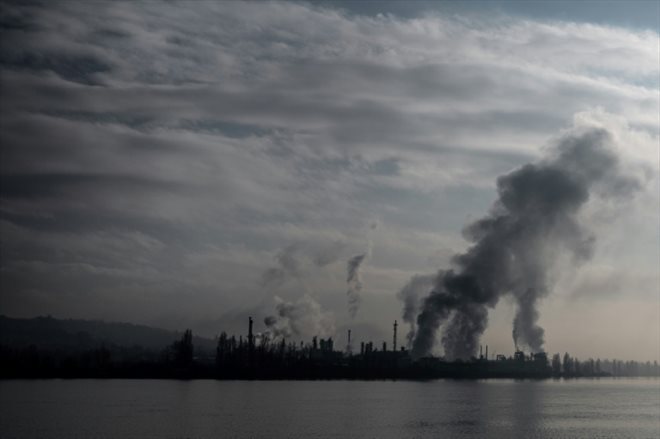Banque de France Governor François Villeroy de Galhau in Davos, Switzerland on May 23, 2022 (AFP/Archives/Fabrice COFFRINI)
Pioneering approach or additional constraint? Already in charge of the financial rating of companies, the Banque de France is fine-tuning its “climate indicator”, an assessment of their ecological transition efforts cautiously welcomed by employers.
This new company rating system, based on three criteria, is still far from conditioning companies’ access to credit.
But if the current experiment turns into a permanent climate rating, “it will be an extremely innovative device in Europe. There is no equivalent today”, recently assured the Governor of the Banque de France, François Villeroy by Galhau.
Experimented with “a few dozen” companies in 2022, “we want to be able to test it on around 500 companies this year”, explains to AFP Hervé Gonsard, the director general of services to the economy and the network.
But be careful not to “wash more green than green”, by imposing on French companies obligations from which their European competitors would be exempt, warns Alexandre Montay, general delegate of the Movement of medium-sized companies (Meti).
For the time being, “very large” CAC 40 companies and certain very polluting companies are participating in the experiment, details Hervé Gonsard without revealing names.
By 2030, the Banque de France hopes to generalize its climate indicator to the 300,000 French companies generating more than 750,000 euros in turnover, i.e. those to which it already assigns a financial rating (rating).
Where the financial rating measures the ability of the company to honor its short-term financial commitments, the climate indicator first assesses the positioning of the company in relation to the “ideal trajectory” of decarbonization of its sector. activity, a reference curve drawn by the French agency for ecological transition (Ademe).
The Banque de France also measures the company’s exposure to physical risks (floods, fires, etc.) and its degree of maturity in managing its climate and energy transition.
Boss of the Calix Conseil firm, Guillaume de Bodard believes that “the cause is just”, but warns about the potential “complexity” of the climate indicator.
– Consistency –
“Few companies are aware of what will fall on them,” says the man who also chairs the Environment and Sustainable Development Commission of the Confederation of Small and Medium-Sized Enterprises (CPME).

A chemical plant near Saint-Clair-du-Rhône south of Lyon, January 19, 2022 (AFP/Archives/JEAN-PHILIPPE KSIAZEK)
“VSEs/SMEs do not have an in-house person to manage this, their chartered accountant is not immediately competent in extra-financial and environmental matters”. Guillaume de Bodard therefore asks the authorities for “quick calculation tools” for climate data.
Between the European CSRD directive, the future French standard of environmental excellence “triple E” and the climate indicator, Alexandre Montay is also worried about the “plenty of indicators linked to environmental transformation”.
“There is a real issue of consistency” between these indicators “so as not to lead companies to only do reporting” (transmission of information, editor’s note), insists the representative of Meti.
Hervé Gonsard tries to clear mines. “The goal is not to add an administrative layer,” he says.
“Until now” could stack up “the Banque de France questionnaire, the Bpifrance questionnaire, the BNP Paribas questionnaire, the Société Générale questionnaire… If we unify reporting” by centralizing climate data in a single database at the Banque de France, as for the financial rating, “we simplify the life of companies”, he insists.
Several banks have indeed developed their own indicators in recent years. BNP Paribas, for example, launched an “ESG Assessment” (environmental, social and governance assessment) in 2021, which notably measures the performance or environmental risk of companies.
“A + Climate + score, based on robust figures communicated by companies and drawn up by the Banque de France will be useful to supplement the analyzes carried out by the banks themselves”, therefore estimates the French Banking Federation (FBF), associated with the central bank indicator design.
From there to imagining that financial institutions grant loans in the future according to the climate rating of a company, there is only one step.
“Tomorrow, it is clear that a good quality climate indicator will be more likely to help finance companies that play the game of greening”, anticipates Hervé Gonsard.
© 2023 AFP
Did you like this article ? Share it with your friends with the buttons below.




